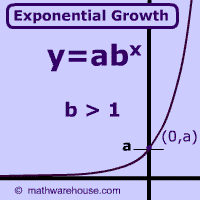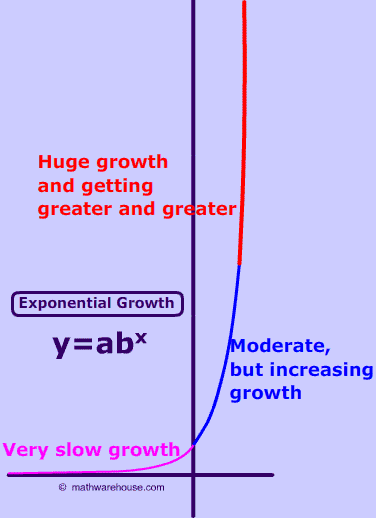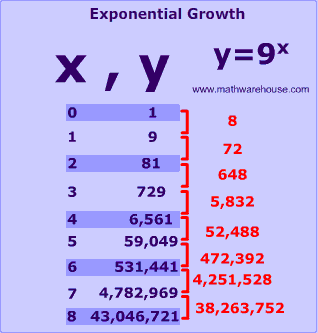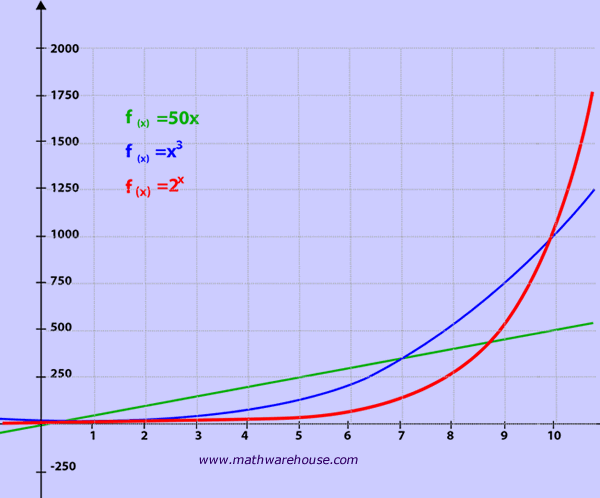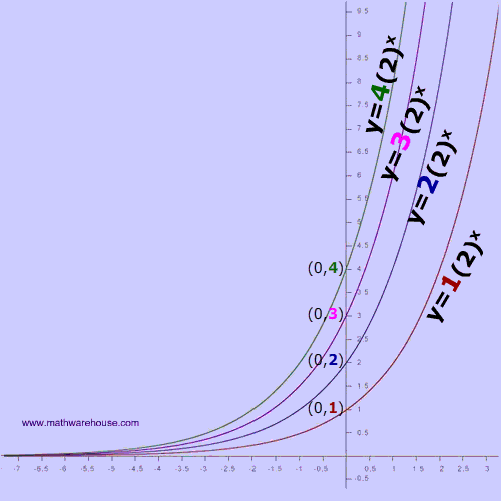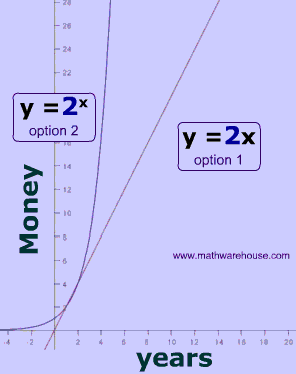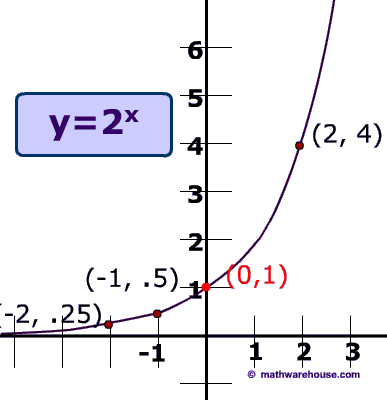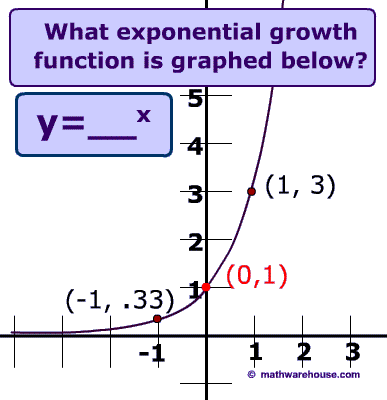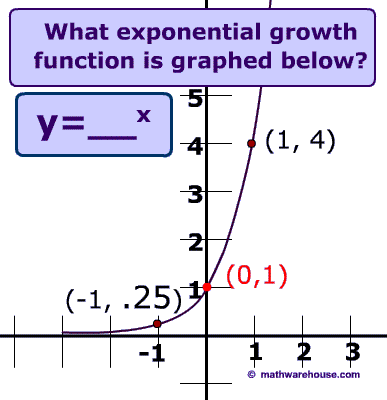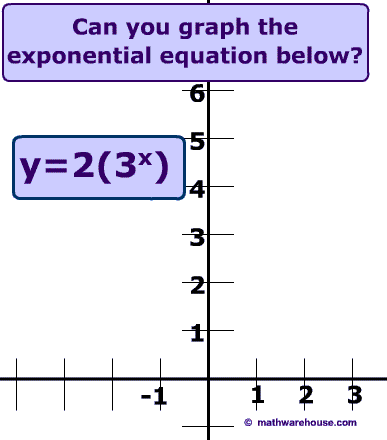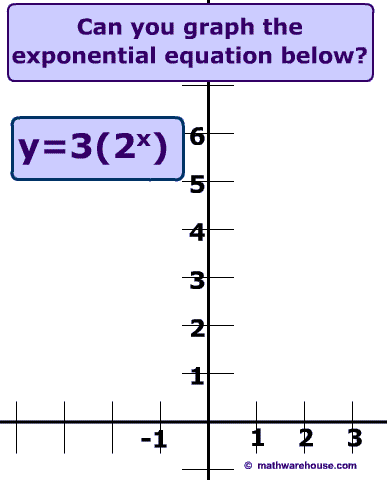Properties
- Property #1) rate of growth starts slow and increases (Read on, to learn more about this property, which is the primary focus of this web page)
- Property #2) The domain is all real numbers. $$ \{x: x \in \mathbb{R}\} $$
- Property #3)The range is all positive real numbers greater than 0 .$$ \{ y: y> 0 \} $$
- Property #4) It is a one-to-one function
- Property #5) The graph is asymptotic with the a horizontal line. Read more about this
-
Property #6)
The value of 'b' in the general equation must be
greater than 1
-
Property #7)
The inverse of exponential growth is
logarithmic functions.
Of note: Exponential decay is not the inverse of exponential growth.

